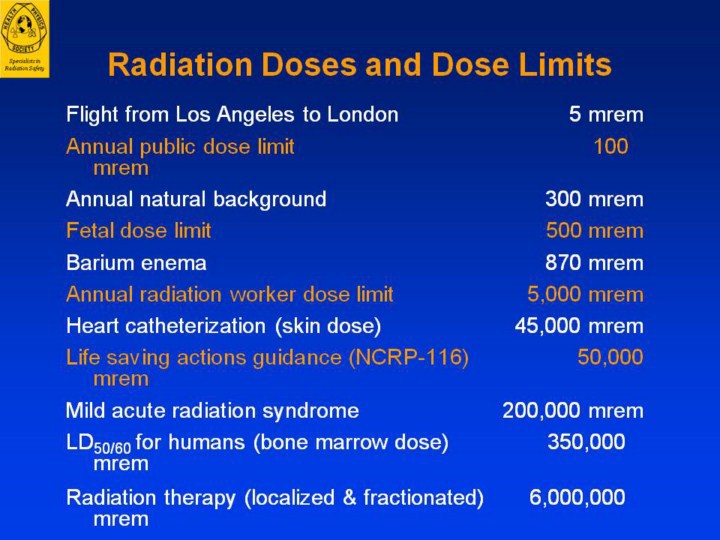| front |1 |2 |3 |4 |5 |6 |7 |8 |9 |10 |11 |12 |13 |14 |15 |16 |17 |18 |19 |20 |21 |22 |23 |24 |25 |26 |27 |28 |29 |30 |31 |32 |33 |34 |35 |36 |37 |38 |39 |40 |41 |42 |43 |review |
 |
Radiation Doses and Dose Limits
•Radioactive
material has always been a natural part of the earth. It has existed
for millions of years in the crust of the earth, in building materials,
in the food we eat, the air we breathe, and in nearly everything that
surrounds us. Radiation from these materials, as well as cosmic
radiation from the sun and universe, makes up the natural background
radiation to which we are constantly exposed. On the average, persons
are exposed to about 300 millirem per year from natural sources (NCRP
Report No. 101).
•The
guidance from NCRP Report No. 116,
Limitation of Exposure to Ionizing Radiation,
states that for life saving or equivalent purposes, workers may approach
or exceed 50,000 mrem to a large portion of the body. Emergency
exposures are considered once-in-a-lifetime. This is below the
threshold for the acute radiation syndrome, discussed later.
•If
an individual is exposed to more than 100 rem at one time, predictable
signs and symptoms will develop within a few hours, days, or weeks
depending on the magnitude of the dose. About half of all people
exposed to a single dose of 350 rem will die within 60 days (LD50/60)
without medical intervention. The large doses used in medicine for
radiation therapy, while higher than this dose, are given to only part
of the body and are typically given over a period of weeks.
•Heart
catheterization is a skin dose; barium enema is an effective dose. (NRPB
Report R-200, 1986)
•The
dose limits are highlighted in orange.
|